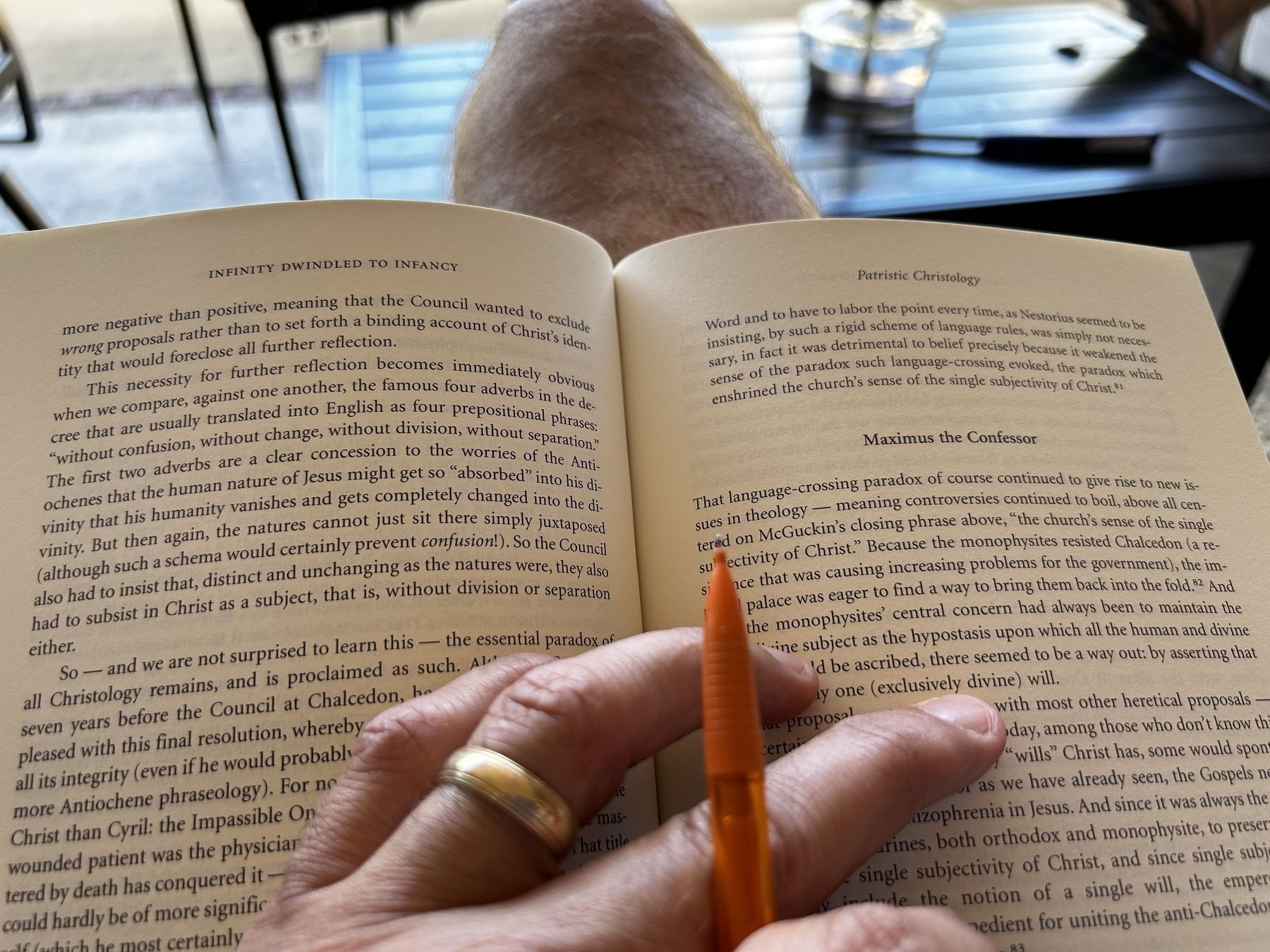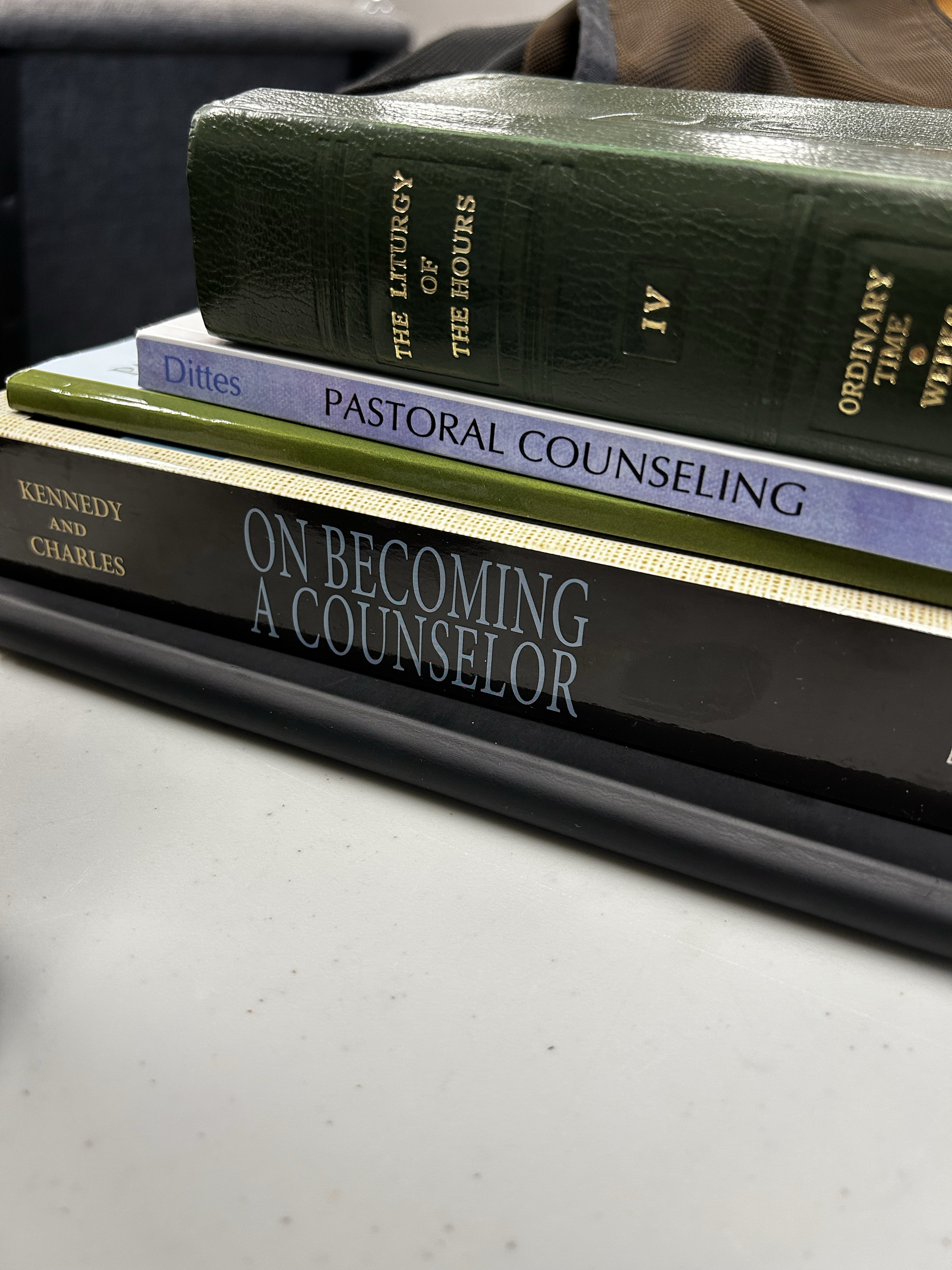It’s been a hot minute or two since the last update. First, the big news: another grandson! He was born on Monday, and everyone is - as you would expect - properly bonkers. His older brother - at a hoary not-quite-2 years old - was a little neutral at first but seems to be warming to him fast. Everyone is doing very well; praise God from whom all blessings glow.
A few of us are in the homestretch for this online Evangelization and Catechesis class, which has largely focused on the cultural landscape. This section’s readings have focused on Jordan Peterson’s 12 Rules for Life, which struck all sorts of chords when it came out a while back. Victor Frankl is on deck next, which wraps up the readings so we can pivot to final projects. As I was stretching at the end of a run the other day, my project idea came all at once, and I had to hustle to the car to get it down in an iPhone note before I forgot it.
Our in-person class next weekend concludes a Christology/Mariology sequence. The final presentation and paper are both in the can, so I can focus on studying for the written exam. And I ordered the books for next month’s liturgical practicum - the Roman Missal and Rite of Baptism for Children. This one is taught by our vicar general, who we love because he is awesome. I think we also have him for canon law next year.
Finished Loki. Started The Last Kingdom. Still working through Absalom, Absalom and a few other things. There’ll be a bit of a break as we head into December, which I will use to get caught up on personal reading and maybe fit in some Factorio or OpenTTD.
I hope and pray that you are well. When I pray the morning office, I always add two extra intercessions - one for the Church at work in the vineyard of Nashville and another for my family, friends, co-workers, and the larger community. That’s you, the one reading this.
It is possible that we will never meet this side of the veil of death. No matter. You were remembered this morning and will be again tomorrow and again the day after that. If God wills my ordination, I will carry you with me whenever I approach the altar or lift the chalice. If you pray, remember me and my brethren as well.















